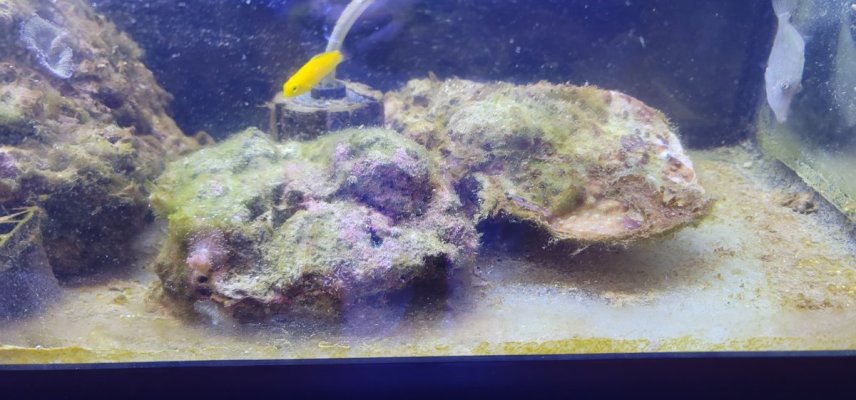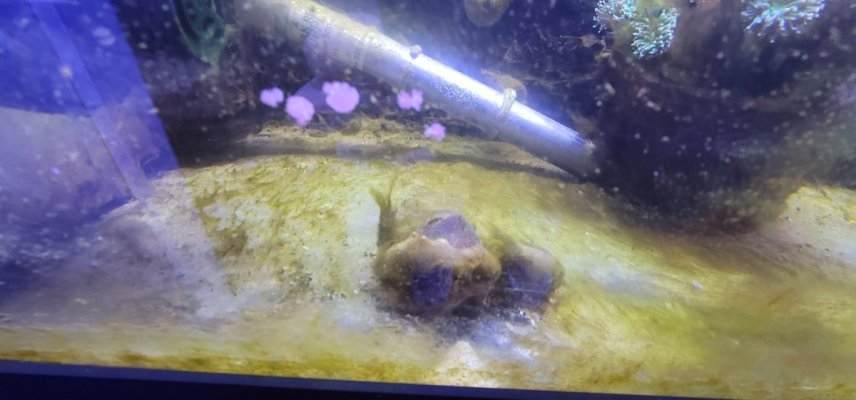- Joined
- Dec 6, 2016
- Messages
- 1,552
- Reaction score
- 1,858
so a little back story. I have a 22 gallon sumpless nano that has been running for 2 years with live rock from Florida. It’s had it’s fair share of ugly stages but recently I’ve been having some pale sps and cloudy bacterial blooms which ultimately was due to very low/undetectable nitrates and super low phosphates. Everyone recommended dosing nitrates and phosphates since higher feedings never worked in raising anything.
fast forward about a week I started dosing nitrates and phosphates. Nitrates got raised fairly quickly and phosphates were always tough to raise. Stopped dosing the nitrates as it was about 28ppm but the phosphates were always super low around .02ppm. Corals continued to look better, frogspawn was super fat and fluffy but then boom, out of no where I got Dino’s.
glass literally turns brown after wiping it down in 30 minutes. Sand is covered and so is the rocks. I always thought Dino’s kind of came from bottoming out nitrates and phosphates but now I think it’s more from an uneven imbalance but it almost seems like finding that balance is super tricky. Not sure what to do but Uv on this system isn’t easy and can’t seem to find my microscope.
also I do notice it looks to be better/ water is more clear at night with the lights off. Any suggestions, would be greatly appreciated!
some photos





fast forward about a week I started dosing nitrates and phosphates. Nitrates got raised fairly quickly and phosphates were always tough to raise. Stopped dosing the nitrates as it was about 28ppm but the phosphates were always super low around .02ppm. Corals continued to look better, frogspawn was super fat and fluffy but then boom, out of no where I got Dino’s.
glass literally turns brown after wiping it down in 30 minutes. Sand is covered and so is the rocks. I always thought Dino’s kind of came from bottoming out nitrates and phosphates but now I think it’s more from an uneven imbalance but it almost seems like finding that balance is super tricky. Not sure what to do but Uv on this system isn’t easy and can’t seem to find my microscope.
also I do notice it looks to be better/ water is more clear at night with the lights off. Any suggestions, would be greatly appreciated!
some photos
Last edited:






















